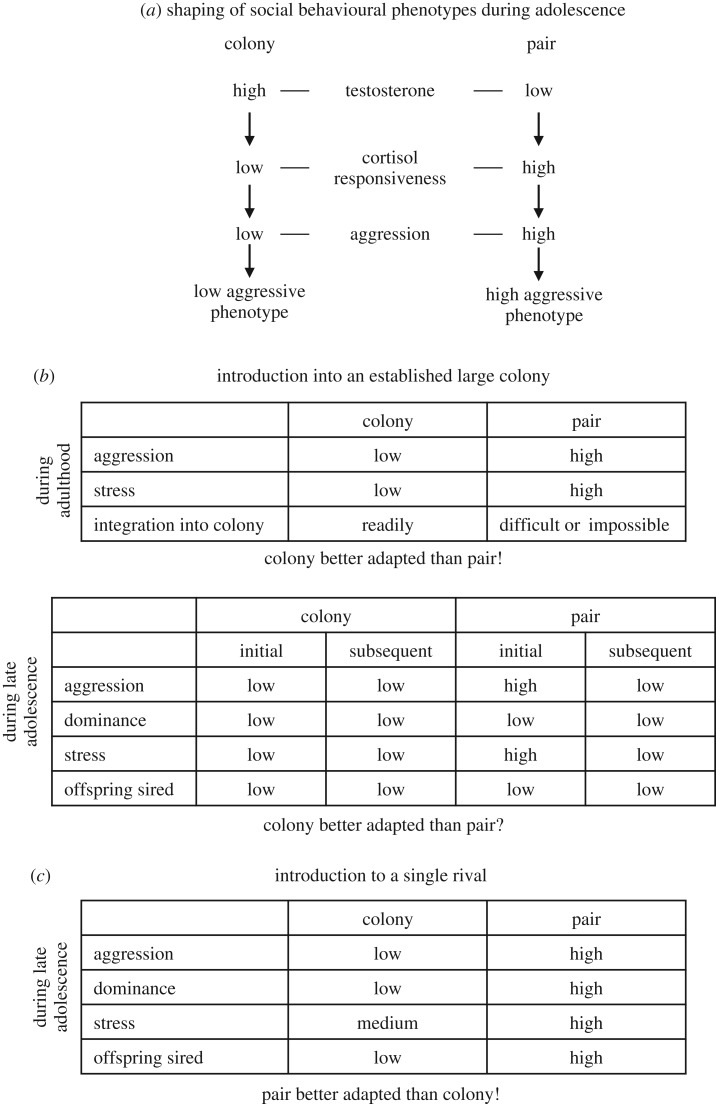Figure 1.
Summary of findings on the adaptive shaping of the social behavioural phenotype during adolescence in male guinea pigs. (a) Neuroendocrine pathways: variation in the adolescent social environment—males living in large mixed/sexed colonies or in pairs of one male and one female—triggers different neuroendocrine responses that shape either low or high aggressive phenotypes (review: [2]). (b) Outcome when males previously living in pairs or colonies are introduced into established large colonies. During adulthood, males previously living in colonies show low levels of aggression and stress and integrate readily. In contrast, adult males previously living in pairs display the opposite pattern in this situation and integration into colonies is difficult or impossible (review: [2]). During late adolescence, males previously living in colonies display low levels of aggression and stress. In contrast, males previously living in pairs respond initially with high aggressiveness and stress. After about a week, these differences disappear and males previously living in pairs and colonies no longer differ. Due to their relatively young age, both classes of males achieve only low dominance ranks and sire few offspring [29]. (c) Outcome when a male previously living in a colony encounters a male previously living in a pair in the presence of two unfamiliar females during late adolescence. Males previously living in pairs are more aggressive and show higher cortisol stress responses. They more frequently become dominant and sire significantly more offspring [30].

